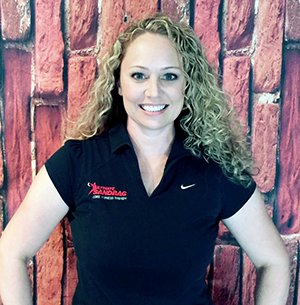How To Bring The Science Of Shoulder Mobility To Your Training
- Jessica Bento, PT
With how problematic shoulders can be, you would be surprised many of the suggestions on social media aren’t tied into much of what the research tells about what actually causes shoulder problems. It reminds me of a study that showed much of what you find on platforms like TikTok about helping low back pain isn’t based on much evidence either. While many probably would say this isn’t shocking, the truth is I know even many clinicians look to learn from online posts.
Trust me, I don’t want to be the old grumpy person saying, “get off my lawn” as we post on social media all the time with thoughtful content. You do have to be REALLY careful though of who and what you follow and take as gospel. That is why I wanted to do a post today on how we take what the science tells us and create betters solutions. Here are some big keys!
Use Diagonal Patterns
While not obvious for those that are use to body part training, diagonal patterns are a popular form of therapy thanks to the world of Proprioceptive Neuromuscular Facilitation (PNF). Back in the 1940’s, physical therapists found that using diagonal patterns were innate to human movement and working on both the nervous system and core stability, function could be restored faster.

I work with a patient that has a very progressive form of MS that has lost almost any ability to use her arms and legs. When working with her, the only time I get some movement is using such manual diagonal patterns with her. You don’t have to have such high level health challenges to benefit from diagonal patterns as PNF lifts and chops have been used in rehab, performance training, and functional strength programs for decades. Below, Josh and I show you how to make them more effective.
These aren’t drills for my patient, but the concepts were still applied and really helpful for most that want to have strong and more resilient shoulders.
Myofascial Stretches, Core Stability, and Breathing Exercises
Individually, myofascial stretching (stretching of the connective tissue like fascia and muscle), core stability, and breath work have all been to increase shoulder mobility and stability.

However, these benefits get amplified when we use all these strategies at once. In fact, I would argue, using all three together feeds into one another. That is why mind-body practices have been used for centuries to help the body and restore health. Instead of focusing on what an individual muscle does (which is extremely outdated as far as understanding the body), we think of how the muscles all interact with one another.
Muscle tightness (we also know that much of the time we are dealing with fascia and not muscle per se) is often a way for the body to compensate for another area not working effectively. That is why working in more dynamic movements that integrate the chain and working with deep stabilizers in specific breath work, allows us to get better results.
Loaded Mobility
Most people get scared using weight, especially when we are talking about addressing a problematic area of the body. I get it, most people have been taught that using weight makes a movement more difficult. While that can be the case, load can also be a way to teach the body to work more effectively.
In using our Around The Worlds as a great example, we can use this drill to create rotational power, but we can also use it to open up the shoulders and thoracic spine. The Ultimate Sandbag helps give us feedback where our movement is lacking. If the foot is not rotating, which causes the hip not to properly rotate and produce force, which then leads to the core not stabilizing, which ultimately impacts the use of the upper body (in this case should be rather relaxed and just directing the weight), we can see compensations that lead to shoulder issues. Not just in this exercise, but is often a sign that such compensations are also done in more movements in life and sport.
That is why also using these drills and being very intentional about what we are teaching the body can yield such impactful results in mobility and stability. You can see how we do it in the 3 movements we highlight below.

Don’t miss our upcoming 6-week Masterclass on improving shoulder mobility, stability, resilience, and performance. Get in on our early bird rate HERE!
Jessica Bento

Jessica Bento, director of education at DVRT, has been a physical therapist for over 16 years practicing in orthopedics, neuro, and geriatric rehabilitation. Jessica is currently director of education for DVRTFitness.com where she has taught DVRT programs at national conferences and all over the world. You can check out her DVRT online fitness educational certifications/courses HERE and get 30% off with code “pb30”

